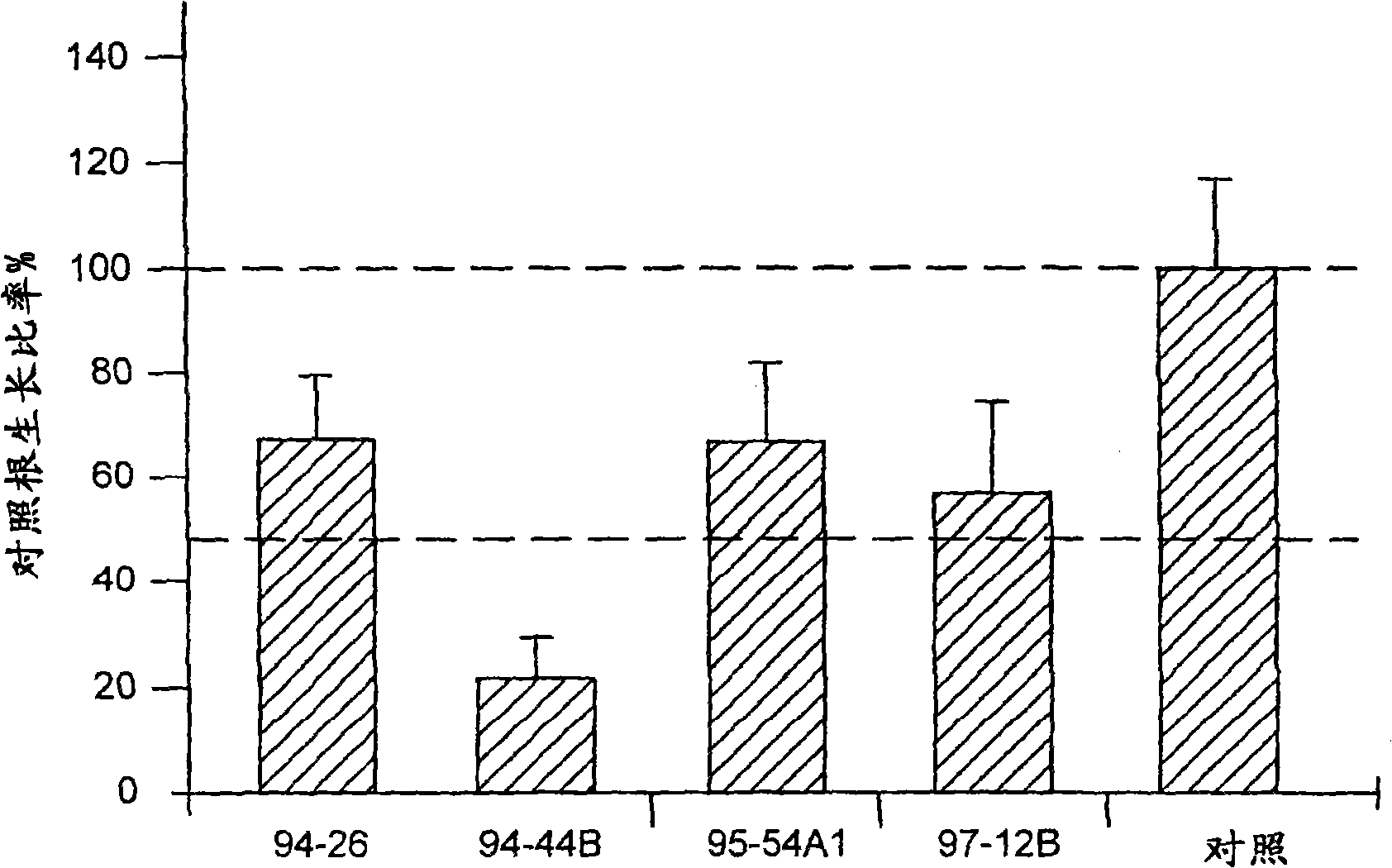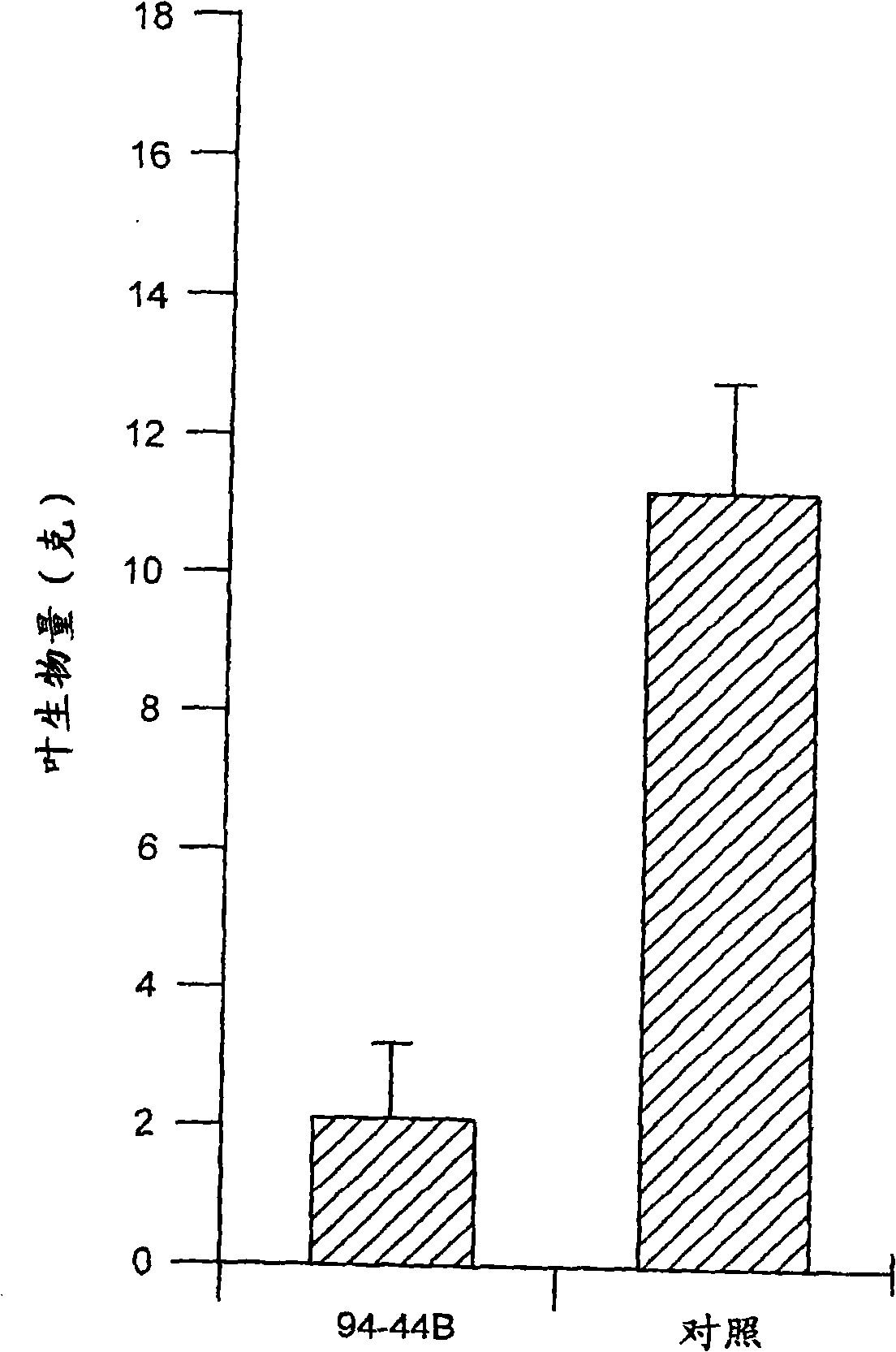Fungal isolates and biological control compositions for the control of weeds
一种分离株、杂草的技术,应用在用于生物控制的化学品、使用真菌的方法、基于微生物的方法等方向,能够解决残余活性影响、没有报导过等问题
- Summary
- Abstract
- Description
- Claims
- Application Information
AI Technical Summary
Problems solved by technology
Method used
Image
Examples
Embodiment 8
[0304] In Example 8 a method for screening one or more isolates of Pheopointoma marea using random amplified polymorphic DNA (RAPD) fingerprinting is given. In this example, not intended to be limiting in any way, the primer pairs given in Table 37 can be used to amplify DNA from a number of different Phoma isolates by PCR. The PCR products can be resolved by electrophoresis. The banding pattern of isolates known to have weed control activity was found to be significantly different from that of other Phoma isolates, thus RAPD fingerprinting provides a method for screening Phoma isolates to determine whether they have weed A useful tool for controlling liveness.
[0305] Accordingly, the present invention contemplates a method of screening one or more isolates of Phomora masaurus using random amplified polymorphic DNA (RAPD) fingerprinting to determine whether the one or more isolates have weed control activity. method, said method comprising:
[0306] a) using primers selec...
Embodiment 10
[0309] A method of screening for one or more isolates of Phomasomascuum using amplified fragment length polymorphism (AFLP) is given in Example 10. In this example, not intended to be limiting in any way, the restriction enzymes EcoRI and MseI were used to digest the chromosomal DNA of a Phomoma mascara isolate to obtain a number of DNA fragments. The EcoRI and MseI sites of the DNA fragments were ligated using double-stranded oligonucleotides EcoRI and MseI linkers. The ligated fragments were then amplified by PCR using the primer pairs given in Table 38. The PCR products can be separated by electrophoresis (see Figure 21 ). The banding patterns of isolates known to have weed control activity were found to be significantly different from those of other Phoma isolates, thus AFLP fingerprinting provides a means for screening Phoma isolates to determine whether they have weed A useful tool for controlling liveness.
[0310] Accordingly, the present invention contemplates a m...
Embodiment 1
[0335] Example 1: Isolation, storage and growth of fungal isolates
[0336] 1.1 Fungal isolates
[0337] Fungal isolates were isolated from small chlorotic and necrotic spots of leaf and stem tissue collected from Canada thistle plants in fields, pastures, and roadsides. Purified fungal isolates from the plant tissue were confirmed to cause the disease symptoms using Koch's law.
[0338] Table 4. Information on fungal isolates from Canada thistle
[0339]
[0340] 1.2 Isolation of fungal isolates
[0341] Fungal isolates obtained as described above were surface sterilized in 5% sodium hypochlorite for 2 minutes, rinsed in sterile distilled water and plated on Difco PDA plates (Potato Dextrose Agar) at 24°C for 3-7 days, 12 hours of light. Fungi growing on the tissue were transferred to fresh medium and allowed to grow to maturity, respectively. Isolates were screened for pathogenicity using Koch's law and bioassays on isolated leaves. Freshly cut leaves from Canad...
PUM
 Login to View More
Login to View More Abstract
Description
Claims
Application Information
 Login to View More
Login to View More - R&D
- Intellectual Property
- Life Sciences
- Materials
- Tech Scout
- Unparalleled Data Quality
- Higher Quality Content
- 60% Fewer Hallucinations
Browse by: Latest US Patents, China's latest patents, Technical Efficacy Thesaurus, Application Domain, Technology Topic, Popular Technical Reports.
© 2025 PatSnap. All rights reserved.Legal|Privacy policy|Modern Slavery Act Transparency Statement|Sitemap|About US| Contact US: help@patsnap.com



